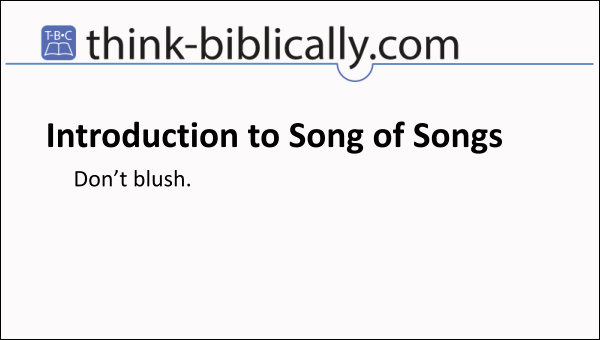By Tyson Thorne

Don't blush. For over two thousand years followers of God have tried to make the Song of Songs about anything but what it is really about. It has been seen as an allegory of God's love for Israel, an allegory of philosophy, an allegory of Christ's love for the church, and a myriad of other allegories. The truth is, it's no allegory. This is a love poem. A poem written to honor God's gift of romance and sexual love in the context of a marital relationship. It is sometimes provocative, it is sometimes explicit and it is always beautiful. So don't blush.
Paul Benware, former professor of Old Testament Studies at Moody Bible Institute, says this about the books purpose in the Biblical canon:
This lengthy poem elevates human, sexual love to the place that God intended. Although the Bible often warns of the negative consequence of immorality, it also extols the blessings that come from moral behavior. This book records the reminiscences of a bridegroom and his bride. In so doing, this Scripture shows the joys of physical love within the boundaries of marital commitment.
There are a great many stories in the Bible about sexual sin, so why shouldn't this example of fidelity also be included?
Author and Date of Writing
Tradition associates Solomon as the poems author, and despite liberal theologians wanting to make everything a post-exilic work there is no evidence to contradict the traditional authorship. Assuming Solomon as the author, the book would have been written around 950 BC.
Structure of the Book
i. First Encounter, 1.1-2.7
ii. Second Encounter, 2.8-3.5
iii. Third Encounter, 3.6-5.1
iv. Fourth Encounter, 5.2-6.3
v. Fifth Encounter, 6.4-8.4
vi. Literary Climax, 8.5-7
vii. Conclusion, 8.8-14
